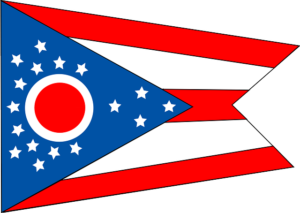Horse Racing Pundits: Why Press The Mute Button?
 Horse racing is all about opinions. Whether it is a good or bad idea to listen to those opinions is a matter for debate. I don’t know about you, but when I’m watching Racing TV or AtTheRaces and I see some racing pundit limbering up to give their views on the next two-year-old horse race I press that mute button. I know it seems a bit mean spirited but you’ve got to protect your sanity by limiting noise pollution. Yes, that sounds even harsher. What will I say next? It’s not all bad news, for some. However, the vast majority of pundits are given the cold shoulder.
Horse racing is all about opinions. Whether it is a good or bad idea to listen to those opinions is a matter for debate. I don’t know about you, but when I’m watching Racing TV or AtTheRaces and I see some racing pundit limbering up to give their views on the next two-year-old horse race I press that mute button. I know it seems a bit mean spirited but you’ve got to protect your sanity by limiting noise pollution. Yes, that sounds even harsher. What will I say next? It’s not all bad news, for some. However, the vast majority of pundits are given the cold shoulder.
I’ll mute the hell out of them.
I don’t know whether you do the same or love to listen to the dulcet tones of all and sundry.
It’s a matter of choice.
I remember Lydia Hislop, one of the few racing pundits I do listen to as she know something about horse racing and intelligent enough to string educated sentences together without blasting my brain with umpteen cliches said: ‘A lot of my racing friends are quick to press the mute button.’ She’s been crowned broadcaster of the year three times for a reason. I think it’s down to her lack of cliches which become the main default mode for most pundits.
It’s interesting that I mute the pundit and not the race commentary although there are a couple of those who are getting my finger closer to the mute button. I’m looking to have a bespoke TV remote control made which features an oversized mute button. A golden button which I can press in some masochistic form of celebration that some beast with an opinion and voice has been rendered speechless. If only we had a control to do that for people in real life. Or just switch someone off completely because they are a waste of space, anti-social, litter droppers, fly tippers, dictators. I’d switch the whole world off and start again.
Anyway, back to racing pundits which by the grace of modern technology are victims of the mute button.
Praise the Lord. It’s my new form of religion. God bless.
The main reason for de-voicing the voices of racing (not Sir Peter O’Sullivan I loved him) is that they aren’t the font of all knowledge. In truth, it is impossible for someone to know everything. My niche is two-year-old horse racing and even though I may sound modest to the point of being megalomanic but I know more about my passion than 99.9 percent of the horse racing world. Unlike the pundits I could actually say something that a listener has never heard before and it would be insightful and make someone say: ‘That’s a good point.’
The main staple for racing pundits is the cliché. The definition for the word cliché is as follows: ‘A phrase or opinion that is overused and betrays a lack of original thought.’
I couldn’t have put it better myself.
In fact, if there was one word to encapsulate that definition it is the word mute.
I’ve never been interested in National Hunt racing so racing pundits opinions don’t matter to me and my lack of knowledge may even give life to their cliches. However, I can remember John Francome about a million years ago constantly saying ‘That horse looks a bit woolly’ like his old gran was addicted to knitting. I’d sit there waiting for a Flat race to come along and think if he says ‘woolly’ once more I’m going to complain to some broadcasting panel and put in a claim for compensation.
I’d think either go back to riding horses or pollute someone else’s wool.
Another offender who didn’t last long was Declan Murphy. I know he had to retire from race riding through injury but if he said ‘That horse is the apple of his trainer’s eye’ once he said it a million times.
I could only imagine if Francome and Murphy were on air together. It would only be a matter of time before they were both singing from the same hymn sheet saying: ‘Woolly Apple.’
My ambition, at the time, was to own a horse named Woolly Apple and for it to win at Fakenham racecourse and along comes John Francome to interview me live on TV and asking: ‘That’s an unusual name, I bet there’s a story behind it?’
Don’t get me started, John…
It would be the only time I wouldn’t press mute.
Modern day racing pundits are just as bad, if not worse. I can cope with three or four: Lydia Hislop, Steve Mellish, Eddie Fremantle… I’m still thinking. John McCririck was a breath of fresh air. It was a sad day when Channel 4 Racing had a change of guard pumping out more noise pollution.
I hate to say it but the sound of Ruby Walsh’s voice goes straight through my brain to some pain point which must be the equivalent to electro convulsive therapy. Perhaps if I am suffering from clinical depression it may help or send me over a cliff. I have a particular problem with former jockeys giving their opinions. They can, and perhaps some people who have had one Guinness too many enjoy their uttering, but, for me, it’s a matter of how quick can I press the mute button. I pride myself on pressing the mute just before they spit out a word. Job done. Success. It’s almost equal to a winner.
I’m all about the reduction of noise pollution.
Can you remember the old days in London when smog filled the air? If you get four or five know it alls spouting on about the Cheltenham Festival you are likely to suffer from acrid pollution.
Press the mute.
I know my words are in a way a form of visual pollution to some. If you love your racing pundits then good for you. I’m sure there are some of you have who have read George Orwell’s 1984.
I won’t detail the worst offenders who are at the top of my hit list. However, a few of these very high-pitched voiced women racing pundits on Racing TV (not my lovely Lydia) really do heighten my phobia to a point of seeking some kind of intervention. I’m not being nasty, but someone should banished them from TV.
Suck the pollution out of the air.
Zap them with the mute.
 Ohio stands as a beacon for
Ohio stands as a beacon for 